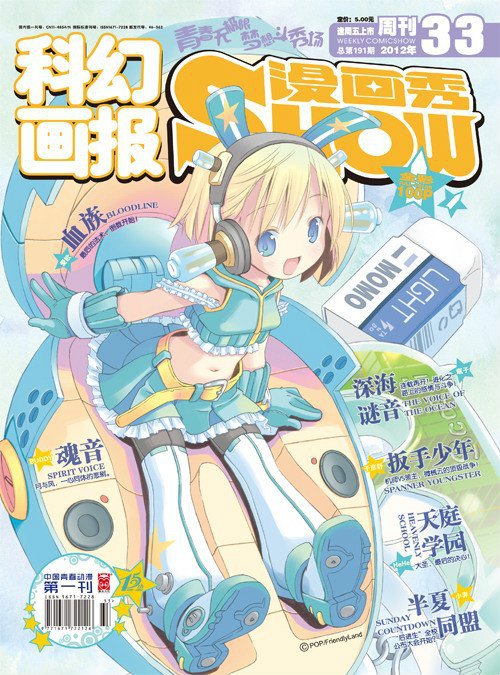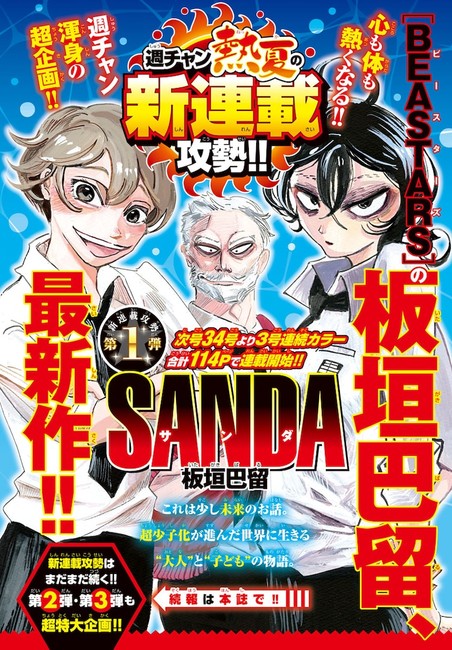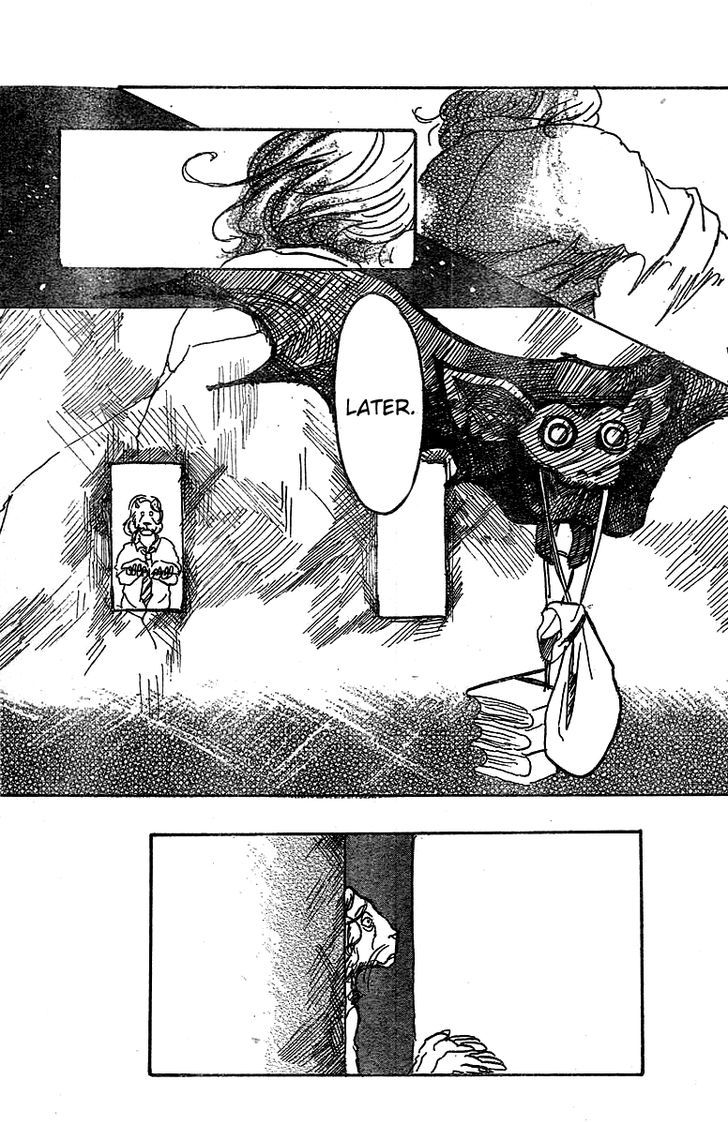Bilibili Comics EN Version Review
 |
| Bilibili Comics Logo with their Brand Mascot |
However, I do want to highlight that I will not compare firstly because Wecomics is strictly for mobiles through its app whilst Bilibili has a website for PC readers. In addition, Bilibili Comics is still very much under construction but it is functional and open to the public, so I will highlight some issues it has but I will not harp on about it.
When you first open the Bilibili website, the main page looks simple and that is not a surprise since it pretty much is the same template as its Chinese alteration. The main problem as I see it is the english lettering in the titles. They do not look great since they were not fitted to be a logo like in the Chinese version, so it just inserted in its place with an english title with some similar colours, and sometimes it does not even replace it since the Chinese logo is left there, what makes this worse, and I am no font expert but the font used is repeated in a lot of titles and it just does not look any good. So the cover images do not look too good aesthetically speaking.
 |
| Image from PC version - The image slider |
In addition, the main point of the page at first the image slider works but the images are not displayed fully. As you see below some of the image is cut out including bits of the title. In the phone some of the images show fully but others also have the same problem. Another issue is in the wording of the genre 'teen' which does not tell you anything about the type of series, so it is useless and should be changed or deleted.
Moving down, after the 'You May Like' , 'Popular' and 'Editor Picks' that is similar to the Chinese alteration, there are genre based recommendations. The problem here is some weird wording such as 'Story rich' and 'Hot Blooded: I am a superhero.' Hot blooded is a word used in Japanese and Chinese for battle orientated series that get you pumped, they have passion and that are growing stronger like things like One Piece, Naruto. In English speaking this word is not used as much to refer to these titles, so I would suggest another word to refer to it and to take the 'i am a superhero' part. The other 'Story rich' is more awkward and it does not really give any idea of what it is supposed to mean especially since it feels like the series in it are so varied that it is irrelevant as a gender recommendation. Also the under case 'rich' and 'I am superhero' is awkward itself because others like 'Adventure In Another World' have all words capitalised, so it needs to be the same otherwise it sticks out.
 |
You can refresh for a new selection of titles under these subtitles, so that is something... though there are not many titles in the platform as of yet so you will see titles reappearing after a refresh or two. It has a schedule tab but that's pretty much irrelevant, some series are updated daily until they catch up to the latest chapter the scanlators had released and so on. Others that are not updated daily and might not have schedules are a bit weird since it can say 'updated whenever', which is not exactly good to see. But I can overlook these until the platform feels more complete since stuff is still completely free to read.
Overall, the platform is simple yet not plain, the colours are nice and its easy to navigate. so it is quite a nice interface but I did not expect otherwise since they probably just re-used the base of the Chinese version and that is a good interface much better than. This is the case for both the PC and Mobile versions, the mobile version is a bit better since its a bit more polished. I hope it eventually fixes my issues with some technical and style choices, and that it eventually gets the same features as the Chinese alteration such as top series rankings and so on.
A key thing to note from this platform is that Bilibili is working together with scanlator groups that worked on their series. They are actively promoting this too, so in essence they are getting the work these guys had done and placing it in this new platform. I do not know exactly the details of this collaboration but that is beside the point, I will be analysing the translation but most notably the quality of the english.
 |
| The scanlator groups its collaborating with |
The quality varies because different groups did different works. Overall, from the 20 or so works I tried, I believe most had good English translation in terms of the quality of the English, only at certain times did a sentence feel awkward or there was a typo. The typesetting was decent for most series. The only one that stood out as bad was the series 'I am Not The Overlord.' Where they struggled to make things fit the bubble and the cleaning was lazy. it needs to be better because the platform needs to have a standard of quality to uphold and it is not passable. But this is probably one of the problems with working with various scanlators groups, the quality is not always going to be similar between one another but I think they should work to make that a reality especially when it eventually starts to monetise since as of now everything is free to read without limitations.
Now onto my thoughts on two series, I read over twenty titles of the platform but I wanted to talk about these two a little. These series all meet a criteria that I set which is that they are exclusive titles of the platform and are originals, not adaptations of novels and the likes. I
The All-Devouring Whale
 |
| A rare case where the lettering seems decent. |
This was quite fun to read. It is a series geared to be using the Japanese term, a shounen series. I thought it rather cool that it used a common xuanhuan (Chinese fantasy) setting but made the fighting and cultivation be centred around creatures that cultivators make contracts with and groom for battles. The cultivators and their sects all fight through their creatures and as they level up they become more connected to their creatures, to the level of taking damage whenever they are hurt. There are a lot of different creatures, so there is a classification system that includes ranks, class and types, so things are quite well put together even if the way the author inserts explanation is quite convenient...
Overall, i believe it is a lot better than most cheap cultivation comics out there because of its creature grooming aspect. In addition, the amount of monsters types and the abilities they can hold makes things a lot more varied when it comes to fight. One of the problems, however for is that the art is not really that good especially when it comes to fight as it just seems to not be able to showcase rapid movements in fights, so it feels stiff and fails to draw out any excitement from me. So, as a result it lacks in the hot blooded department since it does not have the emotional punch and its art in fights is a bit lacking in the exciting department. But overall, it is a fun series but the story is not good, and the characters are bland but I like some of the comedy and there is a bit of personal bias here since I enjoy the creatures' ideas. It is okay work overall.
Tonight Menu: Magical Beasts!
 |
Next, it is also a shounen manga using the Japanese term to describe it. Maybe I should use Shaonian, the Chinese term to describe it actually. Magical Beast is a gourmet story with the usual xuanhuan setting. It has a more lets say more family friendly art style that is quite nice. In this story, the main character is a strong cultivator that seeks to taste the best dishes but he thinks that he is at the peak of the gourmet world and nothing satisfies him anymore until he finds a little demon cook that can cook ancient dishes using magical beasts as ingredients. Now the title makes perfect sense, so he captures the little demon and makes him his personal cook as he hunts down Magical Beasts for him to prepare for him.
The creatures are all based on creatures described in the collection of Classic of Mountains and Seas which is quite neat actually. It is quite a simple and quite silly series that I also found reasonably enjoyable to read. It does develop a story that links the series, but it is quite straightforward and it does not change what the series is about, its main focus is still the food even if there are decent fights and action moments in between the silly moments and the eating. It is an enjoyable title.
Some Final Thoughts -
In the end, the platform is still under construction. Their close ties with scanlators is an interesting way, in the short term it helps it build a wider base of titles more quickly. The downside is the varied quality which does show itself even if I assume they have or at least should have a quality check and assurance person. If they do have one, then it does seem it is not foolproof if some typos and bad cleaning can make its way in some titles. In regards to technical or simple issues such as the lettering, I am sure those will be fixed in due time. It seems to hold promise, Bilibili Comics is the third biggest competitor in China's massive webcomic market, so of course, it has a decent selection to pick from for its English version. Its English version at the moment does not have much yet, but in the little it has so far, it does have a good variety of genres and styles.I do realise that the two series I picked are of similar genre even if they are a bit different in style. Things just ended up that way, I could have picked other stuff but I felt like talking about those two... maybe another time I can talk about some other series on the platform.




































